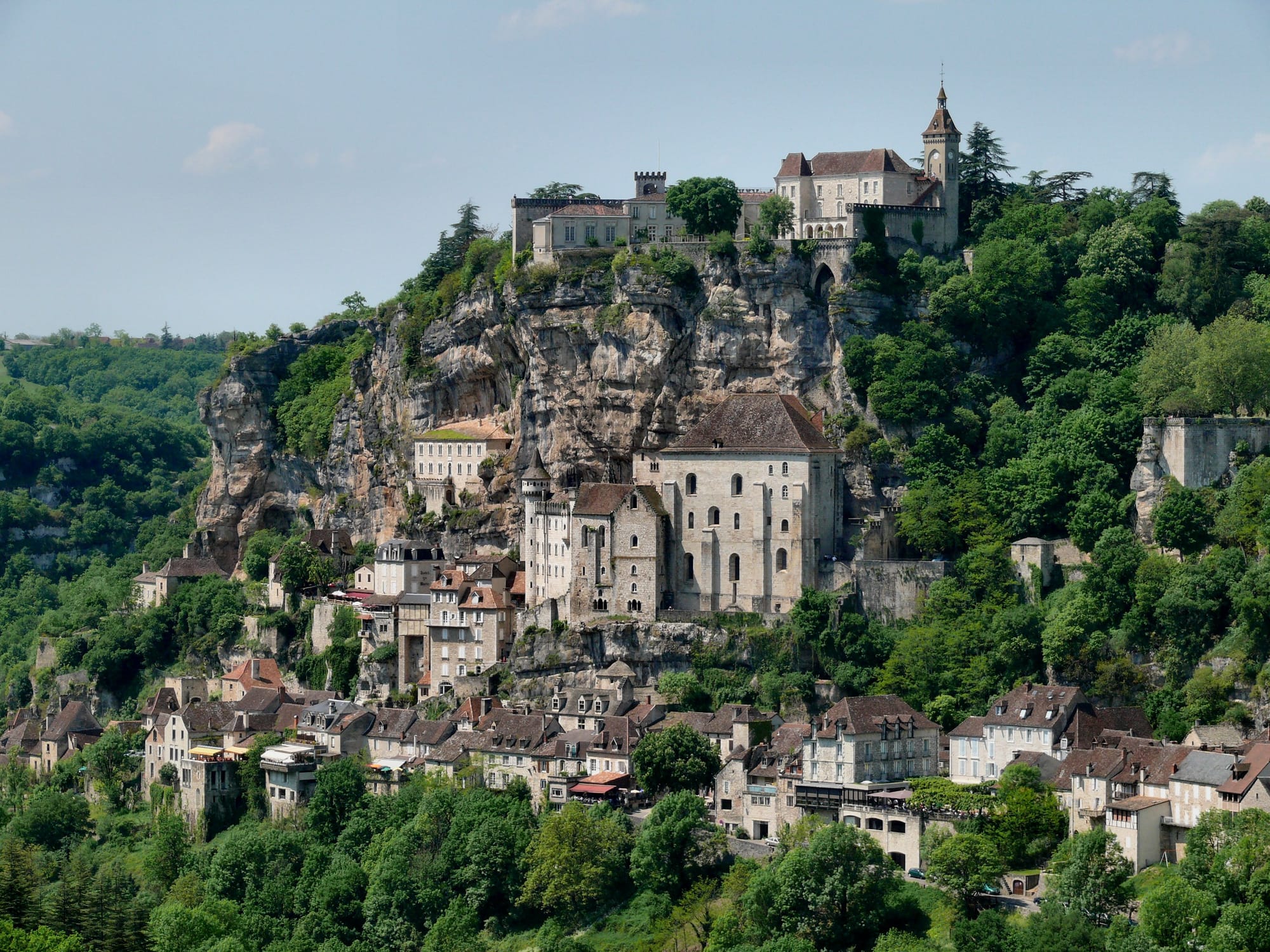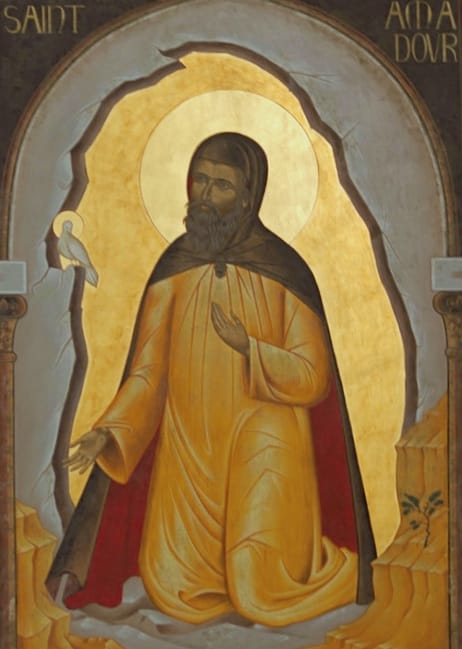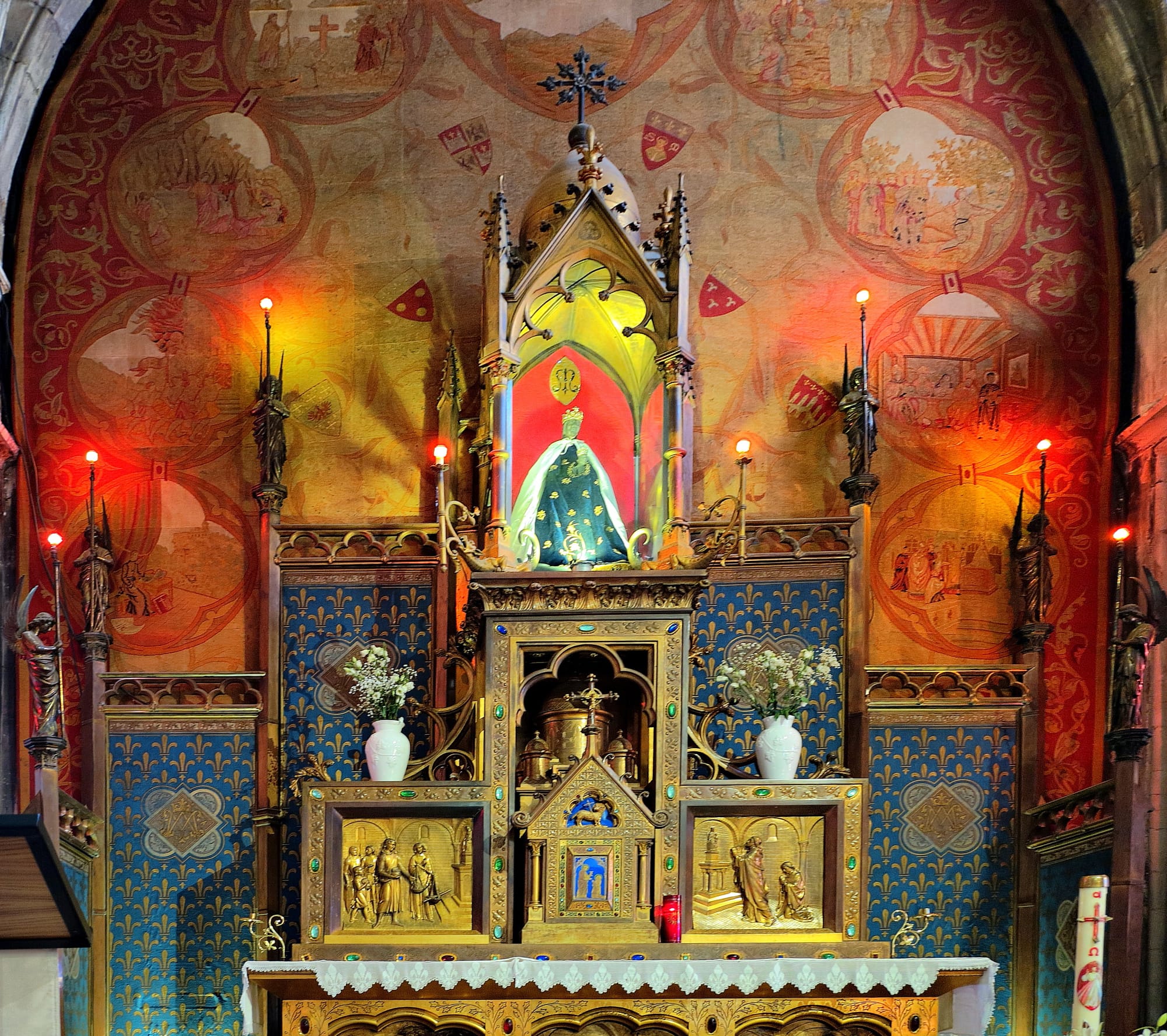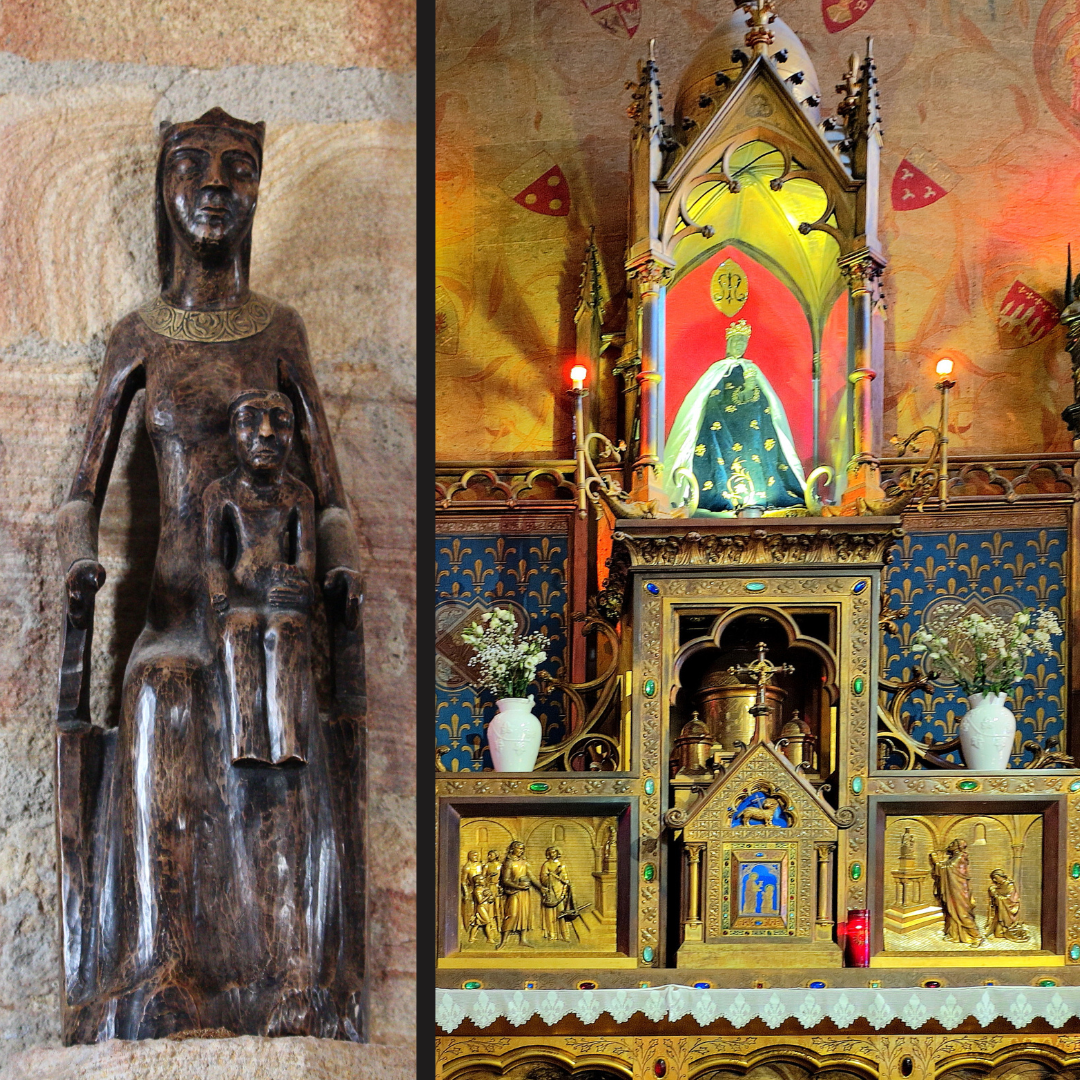Rocamadour is a beautiful "Citadel of Faith" and a hidden gem in south-central France.
This 1000-year-old ancient pilgrimage site hangs on the slopes of a high cliff, is embedded in rocks, and overlooks the Alzou Valley, appearing to defy the laws of gravity.
For several centuries, many kings, queens, clergy, nobility, and the laity would traverse this historic pilgrimage route, with the devoted pilgrims of the Middle Ages praying and ascending over 200 rocky steps of the Grand Stairway of Rocamadour on their bare knees as an act of penance.
Nestled within the medieval hilltop village of Rocamadour are several chapels and churches which were either carved into rock formations or set inside natural caves.

In the Middle Ages, a picturesque castle was built to defend the sanctuary and serve as a protective fort. There is also a passageway surrounded by greenery which follows the Stations of the Cross, with each station of the Via Dolorosa containing a small shrine and poignant pictures of Christ’s Way of the Cross.
Saint Amadour: a friend and lover of God
Of importance is the ancient tomb of Saint Amadour, which is found near the entrance to the Notre-Dame chapel.
Legend has it that in 1166 A.D., an incorrupt but unidentified body of an early Christian hermit was unearthed in a cave on a cliff in Rocomadour.

Locals gave the hermit the name "Amator" or "Amadour" – to honor the saint as a great "lover" and "friend" of God. He is the founder of the shrine and one of the first people said to have sought solitude in Rocamadour.
Saint Amadour chose the cave in the cliff as a hermitage to contemplate God in silence, away from the troubles of the world.
Sadly, the relics of Saint Amadour were destroyed during the French Wars of Religion (1562 – 1598 A.D.) and now his empty crypt remains.
The Black Virgin of Rocamadour
The final destination of the pilgrimage path is the Chappelle Notre-Dame, which houses a Black Madonna statute. The 26-inch high statue of Our Lady carved out of a piece of walnut wood has been venerated for over 1000 years by many pilgrims, including kings of France.
The simple but powerful statue depicts Our Lady holding the Infant Jesus in her lap. It is said that Saint Amadour sculpted the statue of Our Lady with his own bare hands and that he chose Rocomadour as a place of hermitage for his devotion to her.

Historical stories report that men and local villagers caught in the stormy tumultuous sea often implored the Black Madonna of Rocamadour’s intercession to save them from peril and grant them safe passage home.
The men promised that they would undertake a pilgrimage to Our Lady’s sanctuary if their petition was granted.
It was also said that the 8th-century iron bell of the Chapelle Notre-Dame would suddenly ring on its own whenever a miracle at sea occurred, giving it the title of the "Miraculous Bell."
Whenever the sailors arrived at Rocomadour to fulfill their promise and share their story with the priests, the priests recalled the time when the bell tolled on its own for the sailors, as it was a sign that Our Lady interceded for the poor sailors lost at sea.
It is recorded that the Miraculous Bell rang for fifteen years between 1385 to 1617 without any human intervention.
There have been over 126 miracles attributed to the Black Virgin of Rocamadour, with Benedictine monks documenting authenticated miracles in the Book of Miracles in 1172 A.D.
Miracles include Our Lady healing the sick and crippled, curing infertility, rescuing sailors, and providing sanctuary and refuge to those who sought her intercession.
Over the years, many pilgrims have made small votive offerings to Our Lady, with the statue of the Black Madonna at Chappelle Notre-Dame being surrounded by detailed models of ancient ships hanging from the ceilings and beautiful paintings.
Like the sailors who turned to Our Lady, Star of the Sea, in times of need, let us always seek refuge in the Immaculate Heart of the Blessed Virgin Mary so that we can find peace, solitude and stillness in the midst of the raging storms of our life.
As remarked by Saint Bernard of Clairvaux:
“If the winds of temptation arise; if you are driven upon the rocks of tribulation, look to the Star, call on Mary. If you are tossed on the waves of pride, ambition, of envy, of rivalry, look to the Star, call on Mary. Should anger or avarice, or fleshly desire violently assail the frail vessel of your soul, look to the Star, call upon Mary.”
In the words of Saint Anthony of Padua:
“Our Lady, Star of the Sea, we pray that You shine upon us when we are buffeted by the raging sea. Guide us to harbor, defend our going out with your watchful presence so we may be found fit to go out safely from this prison, and come joyfully to unending joy.”


